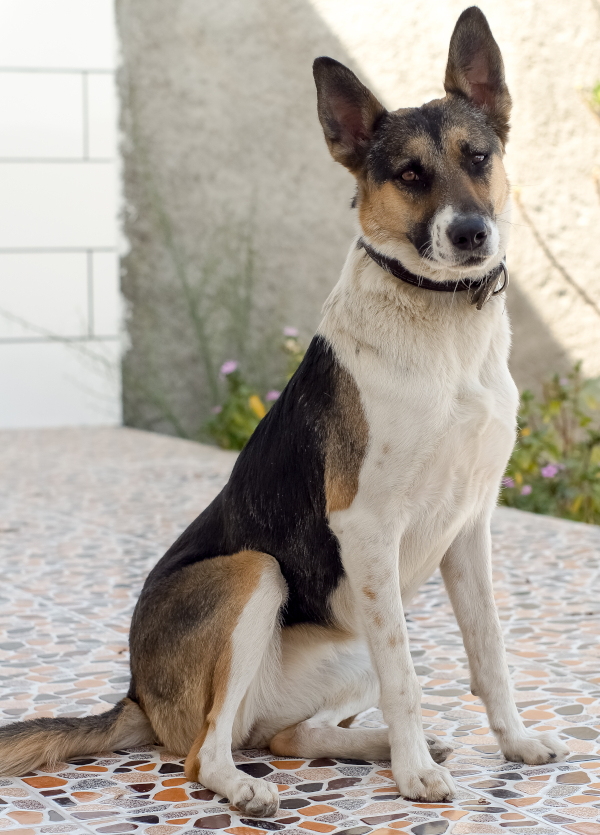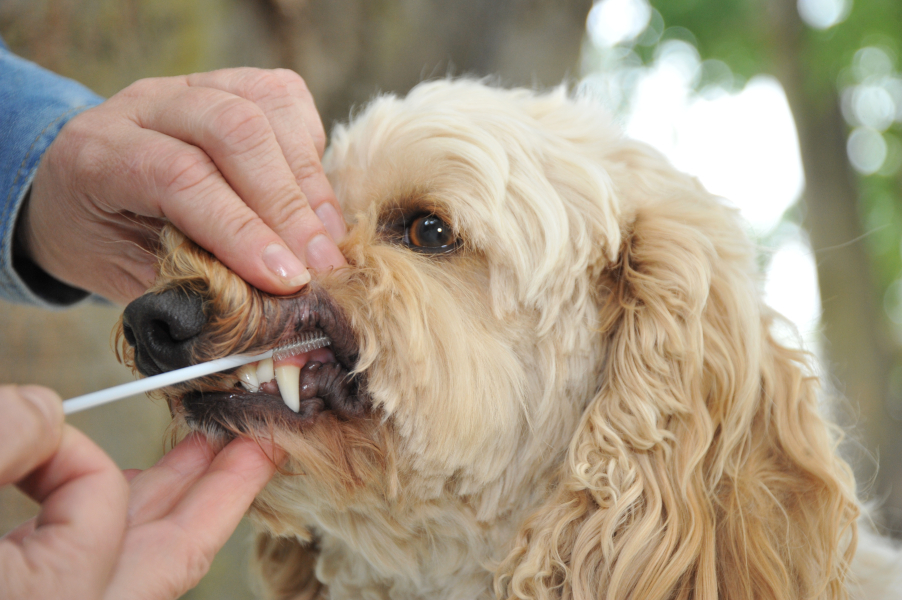Quick Summary

Click here for Price and Turnaround Time
Phenotype: The Panda pattern is characterized by symmetrical markings of white forelock, muzzle, chest, ventral abdomen, collar, and tip of the tail. The amount of white can vary from dog to dog.
Mode of Inheritance: Autosomal dominant
Alleles: N = Normal (no Panda), P = Panda pattern
Breeds appropriate for testing: German Shepherd Dog
Explanation of Results:
- Dogs with N/N genotype are not expected to display the Panda pattern. They cannot transmit this Panda variant to any of their offspring.
- Dogs with N/P genotype are expected to display the Panda white spotting pattern. They will transmit this Panda variant to 50% of their offspring.
- Dogs with P/P genotype are expected to terminate development in utero (embryonic lethal); this genotype has never been observed in live dogs.
Sample Collection
Dog DNA tests are carried out using cells brushed from your dog's cheeks and gums. The preferred cytology brushes are sent to you by mail, or you may provide your own brushes. For accepted alternative brushes, click here
We recommend waiting until puppies are at least three weeks old before testing.

Step-By-Step:
- Make sure the dog has not had anything to eat or drink for at least 1 hour prior to collecting sample.
- When swabbing puppies, isolate each puppy from the mother, littermates and any shared toys for 1 hour prior to swabbing. Puppies should not have nursed or eaten for 1 hour prior to collecting sample.
- If collecting samples from more than one dog, make sure to sample one dog at a time and wash your hands before swabbing another dog.
- Label brush sleeve with name or ID of dog to be sampled.
- Open brush sleeve by arrow and remove one brush by its handle.
- Place bristle head between the dog’s gums and cheek and press lightly on the outside of the cheek while rubbing or rotating the brush back and forth for 15 seconds.
- Wave the brush in the air for 20 seconds to air dry.
- Insert brush back into sleeve.
- Repeat steps 5 - 8 for each unused brush in sleeve on a fresh area of cheek and gums. Make sure to use and return all brushes sent by the VGL. In most cases, it will be 3 brushes per dog. If using interdental gum brushes, please note that the VGL requires 4 brushes per dog and only moderate or wide interdental gum brushes are accepted.
- Do not seal brushes in sleeve.
- Place all samples in an envelope and return to the address provided.
ATTENTION:
- Do not collect saliva/drool – the key to obtaining a good sample is getting cheek cells on the swab
- Do not rub swab on the dog’s tongue or teeth – this will result in poor quality sample
- Do not collect a sample from a puppy that has recently nursed – the mother’s genetic material can rub off on the puppy’s mouth and contaminate the sample
A mutation in the KIT gene has been found to be the source of the dominant white spotting pattern known as Panda that occurs in a line of German Shepherd dogs. This mutation is very recent: it appeared spontaneously in a female, Lewcinka's Franka von Phenom, born in 2000. The Panda pattern is characterized by symmetrical markings of white forelock, muzzle, chest, ventral abdomen, collar, and tip of the tail. The amount of white can vary from dog to dog. In the homozygous state, the Panda mutation is considered an early embryonic lethal as no live dogs with the pattern and with two copies of the mutation have been observed. Heterozygous dogs (one copy of the mutation) do not have any health defects associated with this pattern.
Testing for the Panda pattern to allows breeders to determine if white patterning is caused by this KIT gene mutation.

 Panda White Spotting in German Shepherd Dogs
Panda White Spotting in German Shepherd Dogs